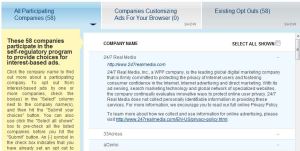 A spooky experience with drug-ad targeting was the initial inspiration for the PrivacyChoice project, so it won’t surprise you that I support the call for an FTC investigation into pharmaceutical ad targeting. There’s a big difference between building a profile about what kind of car you want to buy and a profile that infers that you’ve just been diagnosed with cancer. Ask consumers and they would overwhelmingly say that this kind of targeting should be opt-in, not opt-out.
A spooky experience with drug-ad targeting was the initial inspiration for the PrivacyChoice project, so it won’t surprise you that I support the call for an FTC investigation into pharmaceutical ad targeting. There’s a big difference between building a profile about what kind of car you want to buy and a profile that infers that you’ve just been diagnosed with cancer. Ask consumers and they would overwhelmingly say that this kind of targeting should be opt-in, not opt-out.
Here’s a key point: There’s a major conflict between the two published industry standards for ad targeting based on health conditions.
In the Network Advertising Initiative 2008 Principles (pdf), “sensitive” health information is defined as: “Precise information about past, present, or potential future health or medical conditions or treatments, including genetic, genomic, and family medical history.”
On the other hand, the DAA’s 2009 self-regulatory principles (pdf) say that prior consent is only necessary before collecting “pharmaceutical prescriptions or medical records related to a specific individual.” This standard is much narrower, and permits collection of online behavior to infer medical conditions, so long as personal prescriptions or medical records are not involved.
The DAA should promptly adopt the NAI rule, which appropriately gives consumers the choice of whether to have health-related behavior tracked. It’s not only the right thing to do; without protective and consistent standards, health-based profiling could rightly become a flashpoint that sinks the overall self-regulatory effort. Protecting the fortunes of pharmaceutical marketers isn’t worth it.
